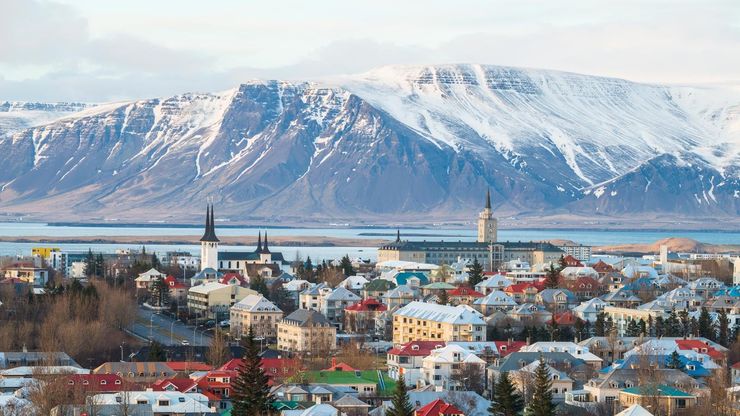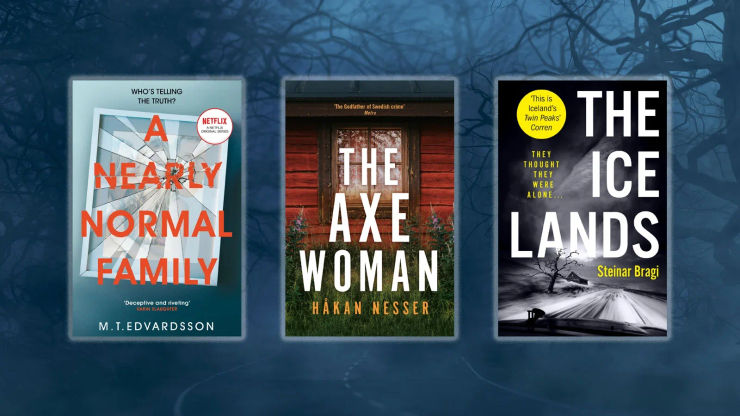Hannah Kent answers reading group questions
We're so excited about Burial Rites that we had a book club to talk about it to our hearts' content. We had a few questions for author Hannah Kent about everything from Icelandic history to writing a gripping narrative; read her answers here.

How much is Agnes's story part of Icelandic history? Is it a local tale or part of the national consciousness?
It's certainly a story that most Icelanders are familiar with, although to varying degrees. Nearly all of the Icelanders I have spoken to over the years, whether local or from the south, have been familiar with the basic details of Agnes's crime and execution, with some knowing a great deal more about the circumstances surrounding her conviction, and others having a more personal, familial connection to the story.
What I have noticed, however, is that many Icelanders assume that Agnes plotted and orchestrated the murder in cold blood. This version of the story – not entirely historically substantiated – where Agnes is the monster behind it all, seems to me to have been mythologised in Iceland. And as with any historical event that is turned into myth, individuals have been exaggerated and idealised. Just as most Australians are familiar with the mythologised version of the bushranger Ned Kelly (the heroic rebel, fighting for the recognition of his people, rather than the more complex criminal), many Icelanders are familiar with Agnes the myth, rather than Agnes the woman.
‘How can we ever know another if we do not hear their story? But then, how can we ever trust what they tell us, when we understand ‘truth' as subjective? ’

Why did Agnes's story resonate with you so much?
While I may not fully understand why I initially found the idea of this condemned woman so compelling, the more I learnt about the crime, and the more research I conducted, the more I became perplexed and frustrated at the way in which Agnes was spoken of as being unequivocally evil. It made me reflect on the ways in which so many people, particularly women in the past, were unable to author their public identity. Women who transgressed, or deviated from the norm, or otherwise seemed not to fit into the accepted – yet limited – roles for women (the mother, the daughter, the virgin, the victim) were seen as suspicious: if you are not an angel, then you must be a demon. It was a cruel dichotomy.
I decided to write Burial Rites not only because I was drawn to Agnes as a seventeen-year old, but because I wanted to represent her ambiguity. My interest was not in researching the crime to somehow prove her innocence, but to discover something of her complexity, and in that, her humanity.
How important is the idea of truth in Burial Rites? We want to discover Agnes's secrets and the extent of her guilt but can these ever be known in a world where people are intent on spinning their own narratives?
This is the beating heart of the novel.
How can we ever know another if we do not hear their story? But then, how can we ever trust what they tell us, when we understand ‘truth' as subjective? Is there a difference between factual and emotional truth, and if so, which do we privilege and why? How can we ever truly be understood when self-representation is made impossible, or when others actively seek to misrepresent us? These are the questions that form the pulse of Burial Rites. These are questions I still struggle with.
What do you hope readers gain from reading the novel?
I hope that readers gain an understanding of, or become curious about, Iceland. It's such a remarkable place, and it forged the person I have become, as dramatic as that may sound. Burial Rites is first and foremost my paean to this place where beauty and horror and tradition and deprivation not only coexisted but were all woven together. It is a country of extremes. This is what draws me to Iceland, and this is what I hope readers will similarly be compelled by.
I also hope that readers are prompted to consider the fallibility of any form of history or storytelling composed by a human capable of bias, self-interest, and the influence of prevailing ideologies. For every story we hear, there is another side that may be as equally, subjectively true.
Discover Hannah's photo diary of Iceland
How much did the Icelandic sagas inform your research and storytelling?
The sagas informed both my research and storytelling a great deal. Anyone who wishes to understand Iceland should read the sagas – they give you an extraordinary insight into the way early Icelanders lived and the codes they honoured, and to this day you can travel the country and see where the events they describe took place. I read the sagas not only to become further acquainted with a country I already loved and knew, but also because I understood that people in Agnes's time were very familiar with the stories.
What sagas, if any, particularly influenced you? Can you briefly describe them?
Quite early on in the research of the novel, I saw a particular relevance to Agnes's plight in the Laxdæla Saga, with its famous line ‘I was worst to him I loved best'. I decided to make Agnes and a few other characters, such as Margrét, aware of this relevance in the novel. The sagas are always mentioned very intentionally within the narrative.
Laxdæla Saga was written around 1245 and, while it covers 150 years in the lives of a community of Icelanders in the Breiðafjörður district, is most memorable for its story of Guðrún Osvifsdottir. Guðrún is a beautiful, intelligent and reflective woman who is forced into an unhappy marriage, and later destroys the only man she truly loves – her husband Bolli's best friend Kjartan. Regarded as unusual for its focus on a woman, the saga is extremely poetic and moving in its depiction of murder, regret and intense love. The events at Illugastadir in Burial Rites mimic, in many ways, the conflict, desire and betrayal at the heart of Laxdæla Saga. It is hard to believe also, that Agnes, a bright woman familiar with the sagas, would not have considered her own experience in relation to this classic story – and the different way she and Guðrún are punished for the similar actions.
Burial Rites

In northern Iceland, 1829, Agnes Magnúsdóttir is condemned to death for her part in the brutal murder of her lover.
Agnes is sent to wait out her final months on the farm of district officer Jón Jónsson, his wife and their two daughters. Horrified to have a convicted murderer in their midst, the family avoid contact with Agnes. Only Tóti, the young assistant priest appointed Agnes’s spiritual guardian, is compelled to try to understand her. As the year progresses and the hardships of rural life force the household to work side by side, Agnes’s story begins to emerge and with it the family’s terrible realization that all is not as they had assumed.
The Good People
by Hannah Kent
From Hannah Kent, the bestselling author of Burial Rites, comes her new novel, The Good People, set in nineteenth-century Ireland and based on newspaper reports and a court case from the time.
As the lives of three women are drawn together, their world of folklore and belief, of ritual and stories, tightens around them. It will lead them down a dangerous path, and force them to question everything they have ever known.
Out now in Paperback and as an Ebook and AudioBook.



